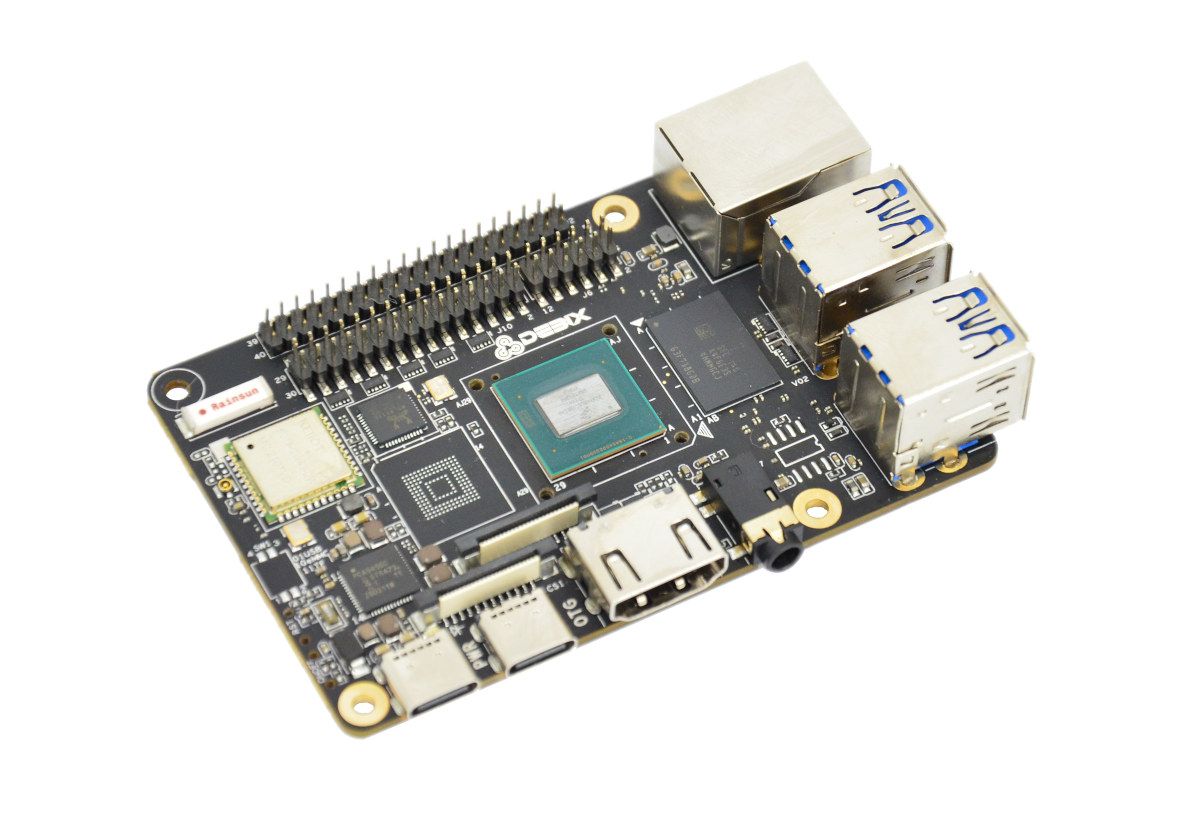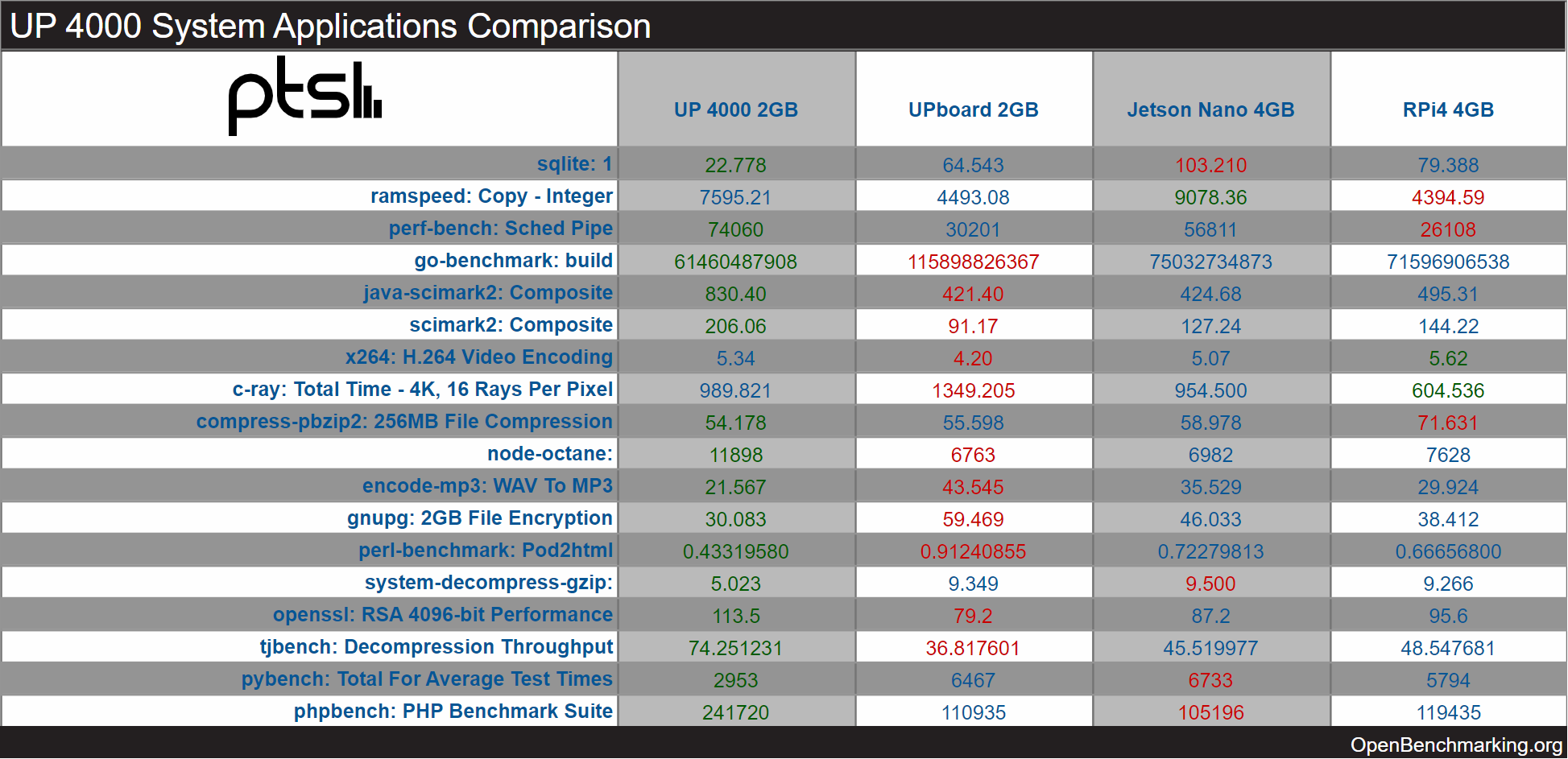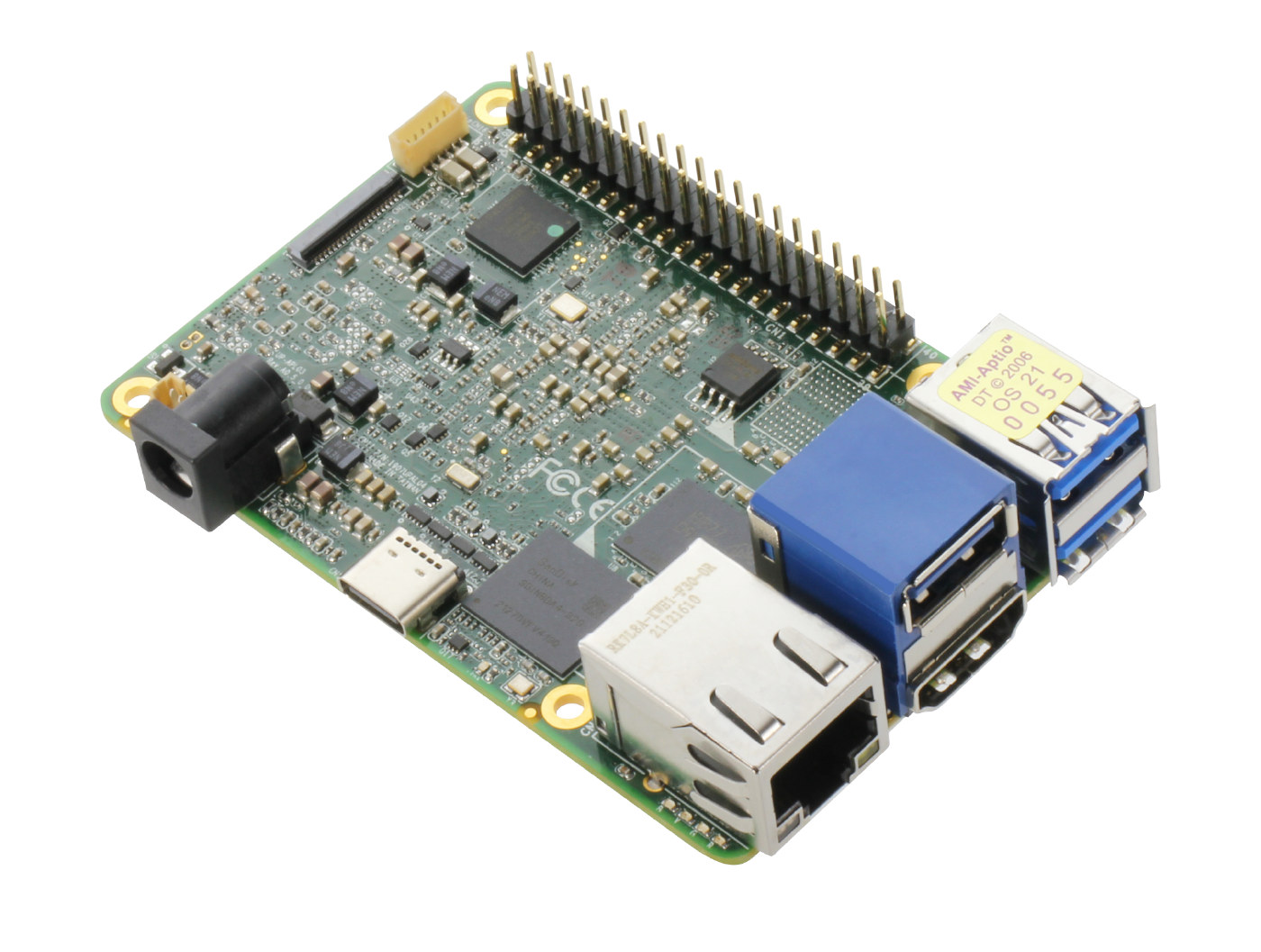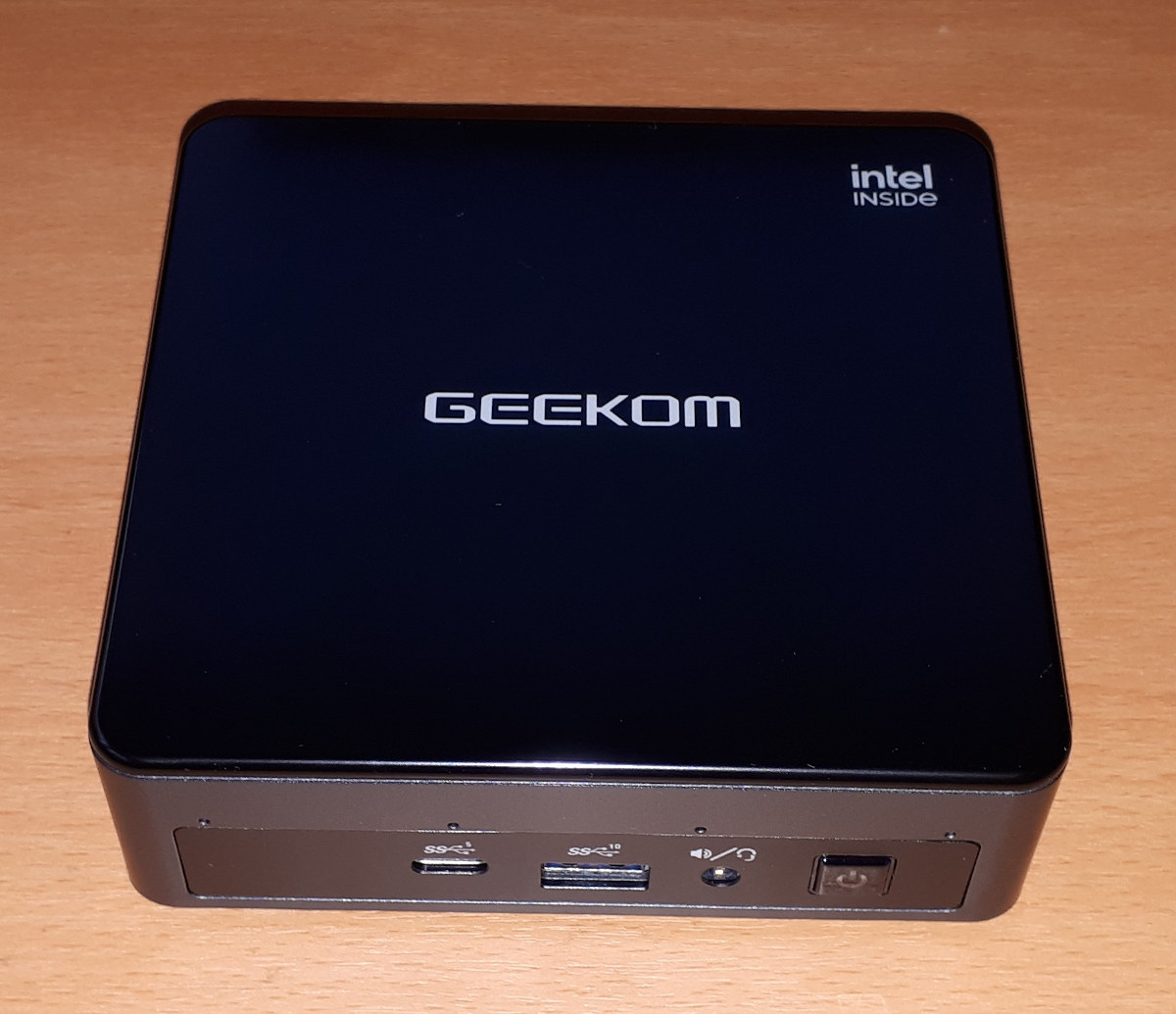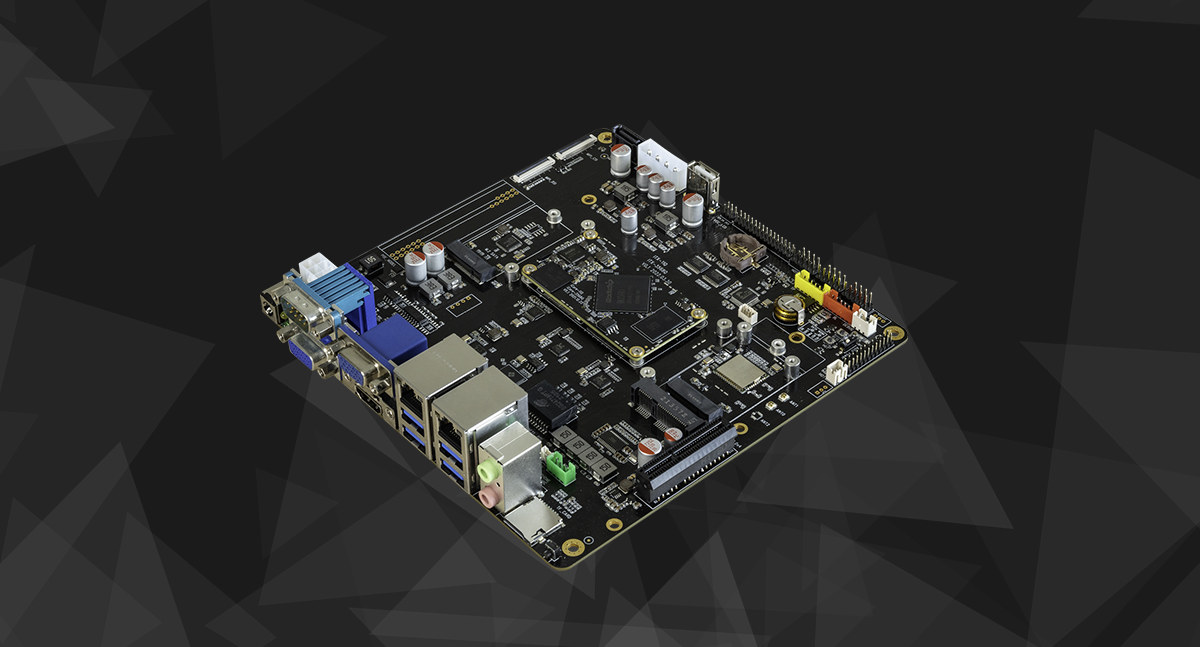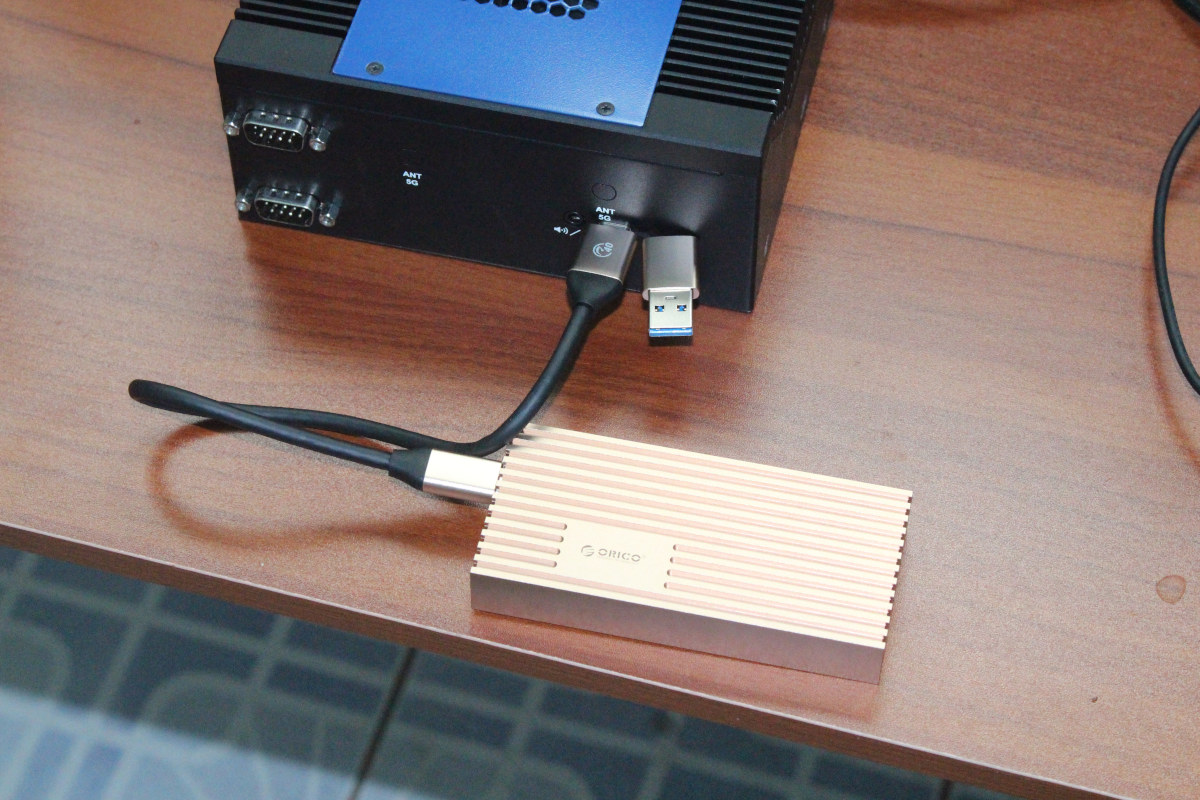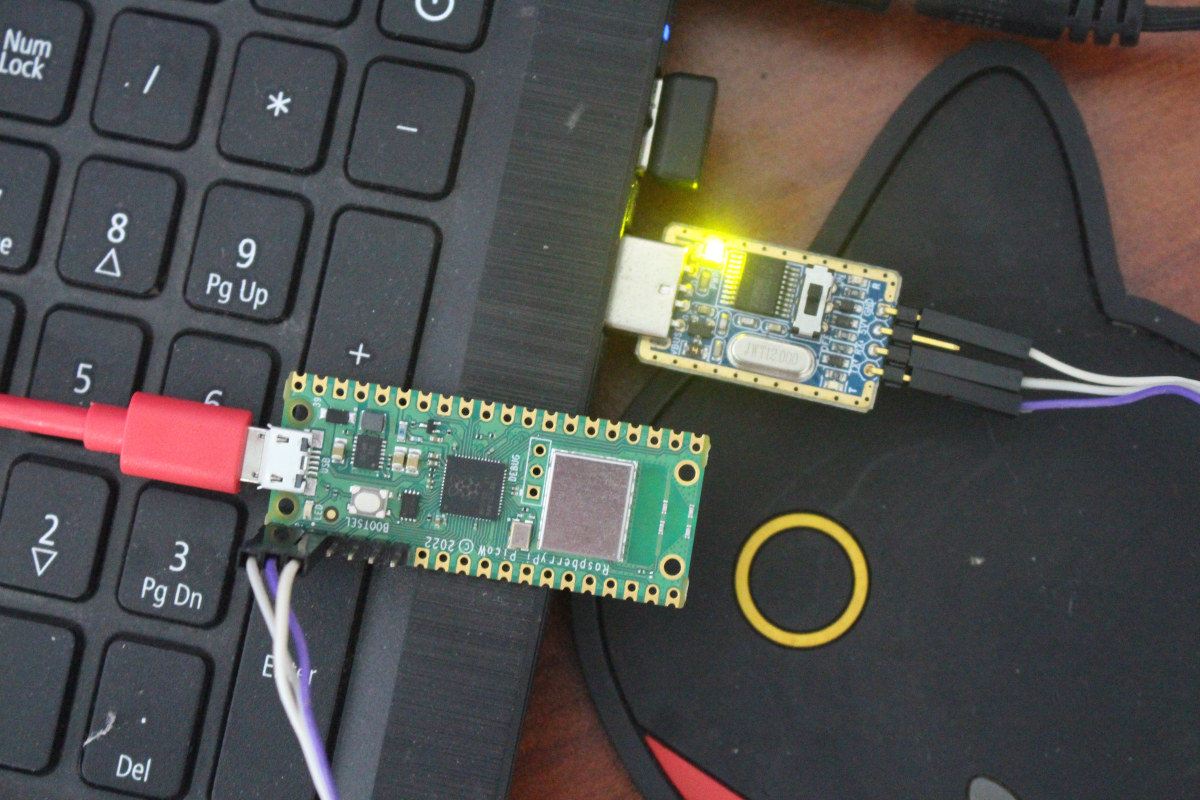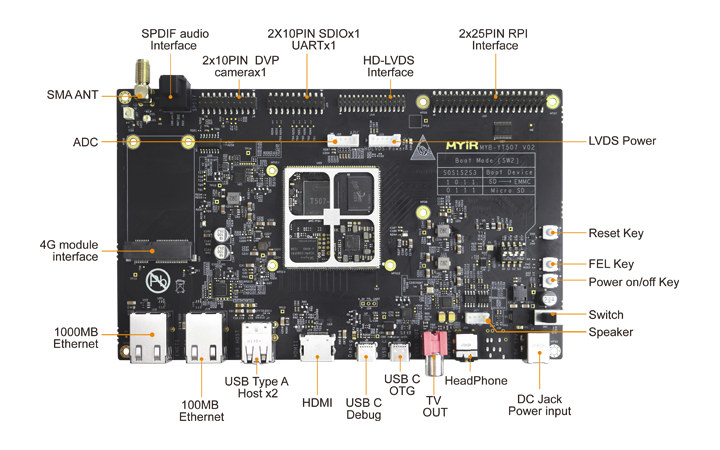DEBIX Model A is a single board computer powered by an NXP i.MX 8M Plus quad-core Cortex-A53 processor with a 2.3 TOPS AI accelerator in a form factor that combines Raspberry Pi 4 and 3 Model B designs. The SBC comes with up to 6GB RAM, a microSD card slot, an optional eMMC flash of up to 128GB capacity, HDMI 2.0a, LVDS, and MIPI DSI display interfaces, a MIPI CSI camera interface, Gigabit Ethernet and WiFi 5 connectivity, plus a 40-pin GPIO expansion header. DEBIX Model A specifications: SoC – NXP i.MX 8M Plus quad-core Cortex-A53 @ up to 1.6 GHz (industrial) or 1.8 GHz (commercial), with Arm Cortex-M7 @ up to 800 MHz, Vivante GC7000UL 3D GPU, Vivante GC520L 2D GPU, 2.3 TOPS NPU System Memory – 2GB LPDDR4 (4GB/6GB optional) Storage – Default: Micro SD card; optional 8GB, 16GB, 32GB, 64GB, or 128GB eMMC flash Video Output HDMI […]
Benchmarks comparison between UP 4000, Raspberry Pi 4, UP board, and Jetson Nano
We wrote about the UP 4000 SBC with an Intel Apollo Lake processor and Raspberry Pi form factor yesterday. But today, I noticed the UP community had put up a benchmarks comparison between the UP 4000 board, the original UP board (Atom x5-8350), the Raspberry Pi 4, and NVIDIA Jetson Nano. They used several of the Phoronix Test Suite benchmarks running on Ubuntu 20.04 (x86) or Ubuntu 18.04 (Arm) on all four boards. The UP 4000 board used featured an Intel Celeron N3350 dual-core processor @ 2.40GHz, the 2GB RAM version of the UP Board, an RPi 4 with 4GB RAM, and a Jetson Nano developer kit with 4GB RAM. As one would have expected, the UP 4000 is ahead in most tests, even though they did not select a model with a quad-core processor such as a Pentium N4200. Note that reading the table may be confusing as for […]
UP 4000 SBC is a Raspberry Pi lookalike with an Intel Apollo Lake processor
AAEON has unveiled the UP 4000 single board computer with a form factor and ports arrangement similar to Raspberry Pi 2/3, but powered by a choice of x86 processors, namely the Intel Atom E3900 series, Celeron N3350, or Pentium N4200 all parts of the Apollo Lake family. The first UP Board was introduced in 2015 as a device offering an x86 alternative to the Raspberry Pi 2 with an Intel Atom x5-Z8300/Z8350 “Cherry Trail” processor, but later “UP bridge the gap” boards from the company used larger “Squared” (85.6 x 90 mm) or “Xtreme” (122 x 120 mm) form factors. The UP 4000 SBC brings us back to the original business card form factor but with a boost in performance and various specifications improvements. UP 4000 vs UP Board specifications AAEON says the new board is able to deliver 30% faster CPU performance and twice the 3D graphics performance […]
GEEKOM MiniAir 11 Review – A Jasper Lake Mini PC with plenty of ports
The GEEKOM MiniAir 11 is not just another mini PC powered by an Intel Jasper Lake N5095 processor but one that distinguishes itself by having a comprehensive range of ports. GEEKOM kindly sent a MiniAir 11 for review and I’ve looked at performance running both Windows 11 and Ubuntu 22.04. MiniAir 11 hardware overview The GEEKOM MiniAir 11 physically consists of a 117 x 112 x 34.2mm (4.61 x 4.41 x 1.35 inches) square plastic case. As an actively cooled mini PC, it uses Intel’s new 10 nm Jasper Lake N5095 processor which is a quad-core 4-thread 2.00 GHz Celeron processor boosting to 2.90 GHz with Intel’s UHD Graphics. The front panel has an illuminated power button, a 3.5mm headphone jack, a USB 3.2 Gen 2×1 port, and a Type-C USB 3.2 Gen 1×1 port. It also includes a CIR (consumer infrared) port which supports remote control. The rear panel […]
Firefly ITX-3568JQ – A Mini-ITX motherboard with Rockchip RK3568 CPU
Firefly ITX3588J mini-ITX motherboard with Rockchip RK3588 SoC now has a little sister/brother based on Rockchip RK3568 quad-core Cortex-A55 processor called ITX-3568JQ, and designed to power Arm PCs, cloud terminals, industrial controllers, edge computers, advanced NVR, NAS devices, and more. The motherboard supports up to 8GB RAM, 128GB eMMC flash, offers SATA storage, dual Gigabit Ethernet, WiFi 6, optional 4G or 5G cellular connectivity, can handle up to three independent displays, and offers plenty of I/O options including an RS232/RS485 DB9 connector and a PCIe slot. Firefly ITX-3568JQ specifications: SoC – Rockchip RK3568J quad-core Arm Cortex-A55 processor @ up to 2.0 GHz with Arm Mali-G52-2EE GPU with support for OpenGL ES 3.2, OpenCL 2.0, Vulkan 1.1, 1.0 TOPS NPU, 8MP ISP, 4Kp60 video decoding, 1080p60 H.265/H.264 video encoding System Memory – 1GB, 2GB, 4GB, or 8GB LPDDR4 Storage 8GB, 16GB, 32GB, 64GB, or 128GB eMMC flash 16MB SPI flash 1x […]
Mini review of ORICO “USB 4.0” M.2 NVMe SSD enclosure
ORICO has sent me a sample of a USB 4.0 M.2 NVMe SSD enclosure for review, which was timely as I did not have a fast USB storage option for testing. In this post, I’ll check out the hardware, show how to install an NVMe SSD, and test performance in UP Xtreme i11 mini PC since it happens to come with a USB4 port. ORICO USB 4.0 M.2 SSD enclosure specs and unboxing The exact model I received is the ORICO M234C3-U4 with a Rose Gold aluminum enclosure (107x50x17mm), supporting M.2 M-Key and B+M Key 2230, 2242, 2260, 2280 SSDs (more on that later), and offering up to 40 Gbps through its USB 4.0 port. The device ships with a USB Type-C to USB Type-C/Type-A cable, a thermal pad, a heatsink, two screws, and a multilingual user manual. There’s only one USB Type-C port one the device. M.2 NVMe SSD […]
Getting started with WiFi on Raspberry Pi Pico W board
Raspberry Pi Trading announced the Raspberry Pi Pico W board basically based on the same design as the original Raspberry Pi Pico board with RP2040 dual-core Cortex-M0+ microcontroller but adding a wireless module with WiFi 4 and Bluetooth LE 5.2, although the latter is not enabled on the board at this time. The company sent me a sample for review/evaluation, and I’ll focus on the WiFi part since the Raspberry Pi Pico W supports the same MicroPython and C/C++ SDKs as for the Raspberry Pi Pico board plus additional APIs for wireless connectivity. Raspberry Pi Pico W unboxing The board I received was cut from a 480-unit reel, and I also got a one-meter long micro USB to USB cable, which should probably not be included by default for people ordering the $6 board. Just like its predecessor, the board is tiny, and The pinout is the same as the […]
AEC-Q100 qualified module features Allwinner T507-H processor for automotive applications
We first wrote about Allwinner T507 when we covered a module and devkit from Forlinx, but now MYiR Tech has designed its own AEC-Q100 qualified system-on-module (MYC-YT507H) and the MYD-YT507H development board based Allwinner T507-H processor. MYC-YT507H – Allwinner T507-H SoM Specifications: SoC – Allwinner T507-H with a quad-core Arm Cortex-A53 processor @ 1.5GHz, Arm Mali-G31 MP2 GPU with support for OpenGL ES 3.2/2.0/1.0, Vulkan1.1, OpenCL 2.0; 4K60 H.265/VP9/AVS2 video decoder, 4K H.264/MJPEG video encoder System Memory – 1 or 2GB LPDDR4 Storage – 8GB eMMC flash, 32Kbit EEPROM (or is it 32KB/256Kbit – see block diagram below) 222x castellated holes with 1.0mm pitch for carrier board connection Networking – 1x RGMII and 1x RMII Video 1x HDMI 2.0a up to 4Kp60 2x single-channel LVDS or 1x dual-channel LVDS or 24-bit RGB up to 1080p60 1x TV CVBS output with PAL/NTSC Camera – 1x DVP digital camera, 1x MIPI CSI […]


